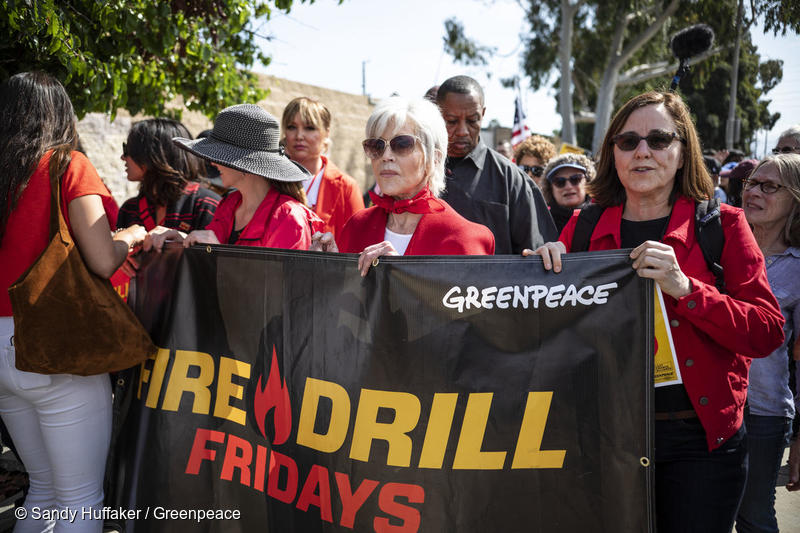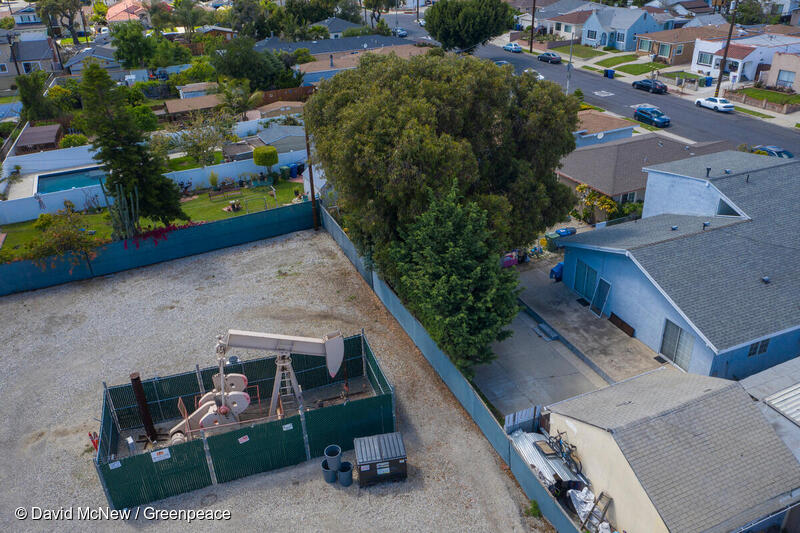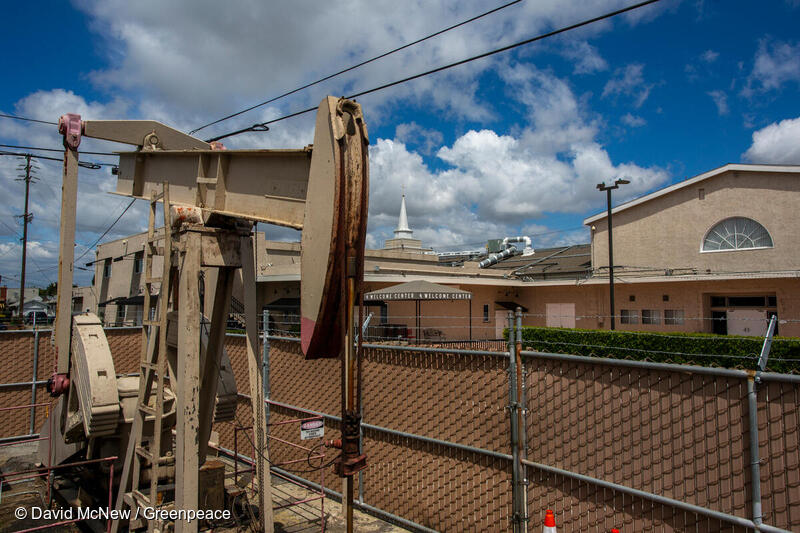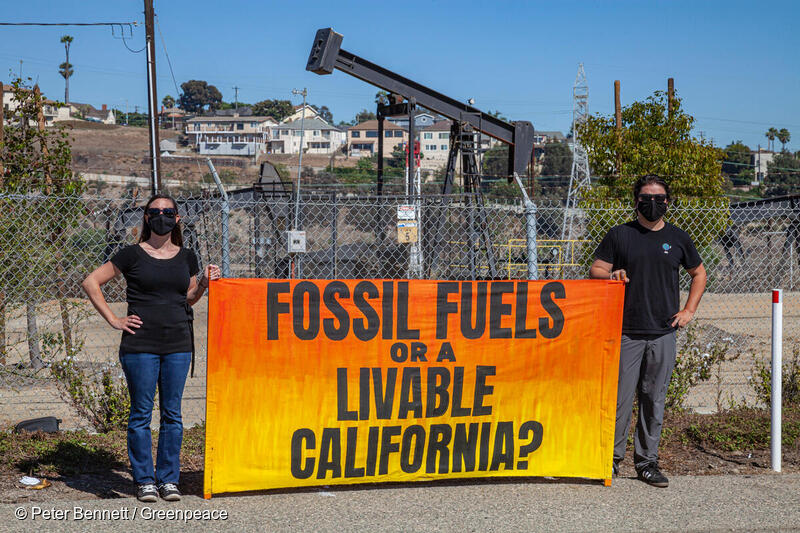After a decade long fight led by frontline communities, California finally enacts a public health buffer zone between drilling and homes and schools.
Despite California’s “green” image, it’s one of the only major oil producing states in the US that has allowed oil and gas drilling to take place in the backyards of homes and on school playgrounds with no public health precautions. That is until today, September 16, 2022, when Governor Newsom signed into law Senate Bill 1137 – legislation that enacts a 3,200-foot public health and safety setback, or buffer zone, to protect sensitive sites from the toxic emissions associated with oil and gas extraction.
Just two weeks ago, on August 31, 2022, on the last night of the California Legislative session, SB 1137 historically passed both chambers, powered through with the leadership of two Latina women, Senators Lena Gonzalez and Monique Limón.
This is huge news and a significant victory for both frontline communities and our climate! Effective January 2023, this bill prevents California from issuing any type of oil drilling permit within 3,200 feet of a sensitive site – including permits to drill new wells. And here is the best news, it also stops all “rework” permits for existing wells (permits to deepen, inject steam or chemicals, place new tubing, etc.). This means that those wells already in existence near homes and schools will eventually cease to operate as well. This historic legislation will finally ease the toxic burden that has plagued close to 3 million Californians for too long — those that are disproportionately Black, Latinx, Asian, Indigenous, and working class communities.
This victory has been a decade in the making, led by frontline communities standing up, organizing, and calling out the toxic conditions which they are forced to endure. Over the past several years, Greenpeace USA and so many of you have been part of this fight, using our megaphone and our powerful numbers to shout from the rooftops that our leaders must put an end to this environmental racism. Doctors and epidemiologists have known that emissions of volatile organic compounds, particulate matter, and other toxics like benzene associated with oil and gas drilling are harmful to human health. Drilling has been linked to asthma, other respiratory diseases, adverse pregnancy and birth outcomes, and cancer. Recent studies also indicate higher risk of severe complications from COVID -19. California’s own scientists repeatedly acknowledged the harm those living near drilling were facing. And yet, year after year, the problem persisted.
Then in 2019, years of campaigning laid the groundwork for then incoming Governor Newsom to answer to our demands. In 2019, after environmental and justice groups blew the lid off scandals of corruption within his oil & gas regulatory agency, Governor Newsom ordered his state agency to begin a public health and safety process to protect communities and workers from oil drilling. Despite this promising news, the rulemaking process dragged on with no tangible changes for the communities continuing to breathe in toxic fossil fuel pollution day in and day out.
Meanwhile, two prior bills introduced into the California State Legislature – both AB 345 in 2020 and SB 467 in 2021 – attempted to establish a required distance between oil wells and sensitive sites like homes and schools. Both bills failed, unable to get enough support from moderate Democrats in the face of robust opposition from the oil and gas industry and powerful labor unions.
But frontline communities, environmental justice groups, and Greenpeace and our supporters continued to organize and fight – submitting tens of thousands of public comments, garnering celebrity and media attention, demonstrating overwhelming public support for setbacks, spotlighting powerful personal stories like those of Nalleli Cobo and Nizgui Gomez and countless others, and escalating pressure around this decade of delays.
In October of 2021, in response to this building pressure, Governor Newsom announced a draft regulatory rule to enact a 3,200-foot setback for only new wells, along with some pollution control measures for existing wells. While historic and significant, that plan only prevented future drilling within the setbacks zone, leaving out the tens of thousands of existing wells located in neighborhoods. And it was still only a draft, meaning it would be years before the actual plan would go into effect.
So we kept organizing and pushing for a strong setback distance. We collectively submitted over 60,000 public comments in support of strengthening the draft rule. We continued to build our movement, by activating Greenpeace supporters living near oil wells in the fight to end neighborhood drilling. And yet, the state agency in charge did little but drag their feet over the last 11 months.
Then the summer of 2022 brought a new scandal for the state agency, when it was revealed that dozens of oil wells located in neighborhoods in Bakersfield, California were leaking explosive levels of methane while inspectors monitored wells from their desks, instead of conducting in person visits. This was just the latest example of the agency’s long legacy of failing to regulate the oil and gas industry and protect public health.
That is why it was significant that Governor Newsom chose to include setbacks in the “climate pillars” he asked the CA Legislature to pass at the end of the legislative season. While the oil and gas industry continued to pour money into myths and scare tactics to pressure legislators to oppose the bill, we moved quickly to dispel these industry myths. On August 31st, the bill that marks an end to neighborhood drilling in California was approved by both chambers of the California Legislature, flipping some of the most obstinate Democratic votes over the years. This moment was the result of the fact that environmental justice and climate movements had fought long enough and organized enough power to finally win.
But as we celebrate this momentous achievement, it is crucial that California’s climate leadership not stop here. California is ground zero of climate change impacts including larger wildfires, a historic megadrought, and other extreme weather events. That is why we must continue to build on today’s progress to phase out drilling across the state, while protecting the workers and communities most impacted by this economic transition.
With state legislators’ vote and Governor Newsom’s signature, our lawmakers made a choice to stand on the side of California’s frontline communities. But this was not an easy position to take, as many faced incredible pressure to cave to industry. And even now, we know the fossil fuel industry isn’t going to pack up and go home, and will make every attempt to weaken and obstruct progress at every turn. We need to make sure California lawmakers know that Californians will continue to stand with them in the work to end neighborhood drilling.




